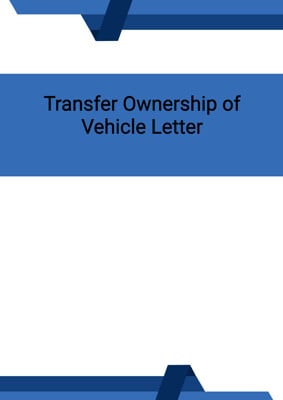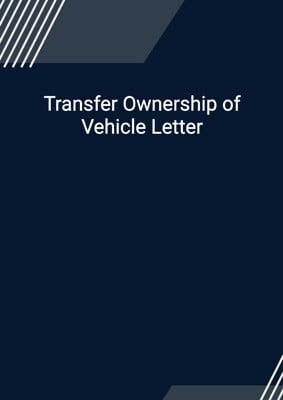How to Tailor the Document for Your Need?
01
Create Document
Fill in the details of the parties. You can click the "Fill with Member’s Information" button to complete it with information saved to your account.
02
Fill Information
Please fill in any additional information by following the step-by-step guide on the left hand side of the preview document and click the "Next" button.
03
Get Document
When you are done, click the "Get Document" button and you can download the document in Word or PDF format.
04
Review Document
The document should be signed by the authorised signatory (or directors of a company) and witnessed to complete the formality.
Document Preview
Document Description
The Bill of Sale is a legal document that serves as proof of the transfer of ownership of a vehicle from the transferor(s) to the transferee(s). It is an important document as it establishes the legal rights and responsibilities of both parties involved in the transaction.
The entire document consists of several sections that provide detailed information about the transfer of the vehicle. The first section of the document explains that the purchaser of a registered jurisdiction state vehicle does not obtain a complete title until the bill of sale has been recorded at the jurisdiction state vehicle registry. This highlights the importance of recording the bill of sale to ensure the transfer of ownership is legally recognized.
The next section of the document provides a description of the vehicle being transferred. It states that the vehicle is as described in the records of the jurisdiction state vehicle registry, emphasizing the need for accurate documentation of the vehicle's details.
The document then proceeds to identify the transferor(s) and transferee(s). It states that the transferor(s) transfer the vehicle to the transferee(s) in consideration of a sum of currency amount paid. This section also acknowledges the receipt of the payment by the transferor(s) and establishes the transfer of ownership.
Furthermore, the transferor(s) make a covenant with the transferee(s) and their assigns, stating that they have the power to transfer the vehicle and that it is free from any liens and encumbrances. This provides assurance to the transferee(s) that the vehicle being transferred is legally owned by the transferor(s) and is not subject to any claims or debts.
The document also includes a statement regarding the mileage or odometer reading of the vehicle. The transferor(s) certify that the stated mileage reflects the actual mileage of the vehicle and that any repairs or replacements of the odometer were done with accurate mileage readings. This ensures transparency and prevents any fraudulent representation of the vehicle's mileage.
Finally, the document states that the vehicle is being transferred on an 'as is' basis, with no warranties or guarantees expressed or implied regarding its condition. This means that the transferee(s) accept the vehicle in its current condition and assume any risks associated with its use or maintenance.
Each section of the document serves a specific purpose in establishing the transfer of ownership and protecting the rights of both the transferor(s) and transferee(s). It is important to carefully review and understand each section before signing the bill of sale.
How to use this document?
Guidance on how to use the Bill of Sale:
1. Enter the necessary information: Fill in the details of the transferor(s) and transferee(s) in the agreement, including their full names and signatures. This ensures that both parties are clearly identified.
2. Record the payment and transfer date: Specify the amount of currency paid to the transferor(s) and the date of the transfer. This establishes the consideration for the transfer and the date of ownership transfer.
3. Verify the vehicle details: Ensure that the description of the vehicle matches the records of the jurisdiction state vehicle registry. This helps to confirm the accuracy of the vehicle's information.
4. Confirm the mileage or odometer reading: Check the stated mileage or odometer reading of the vehicle and ensure that it reflects the actual mileage. If any repairs or replacements of the odometer were done, make sure that the mileage registered on the repaired or replacement odometer was identical to the mileage displayed on the replaced odometer prior to the repair or replacement.
5. Understand the 'as is' condition: Recognize that the vehicle is being transferred without any warranties or guarantees regarding its condition. This means that the transferee(s) accept the vehicle in its current state, and any repairs or maintenance will be their responsibility.
6. Sign and acknowledge the document: Both the transferor(s) and transferee(s) should sign and acknowledge the bill of sale. This confirms their agreement to the terms and conditions stated in the document.
It is important to follow these steps to ensure a smooth and legally valid transfer of ownership. Keep in mind that this guidance is for informational purposes only and does not constitute legal advice. If you have any specific legal concerns or questions, it is recommended to consult with a qualified legal professional.
Not the right document?
Don’t worry, we have thousands of documents for you to choose from:






